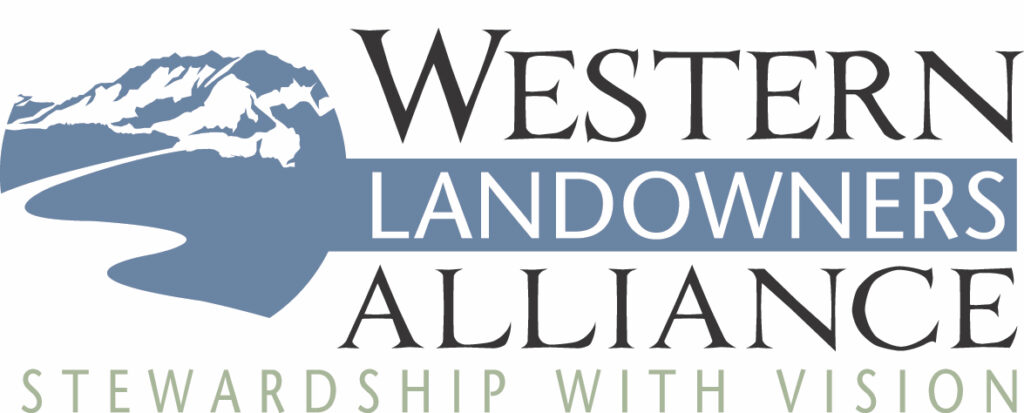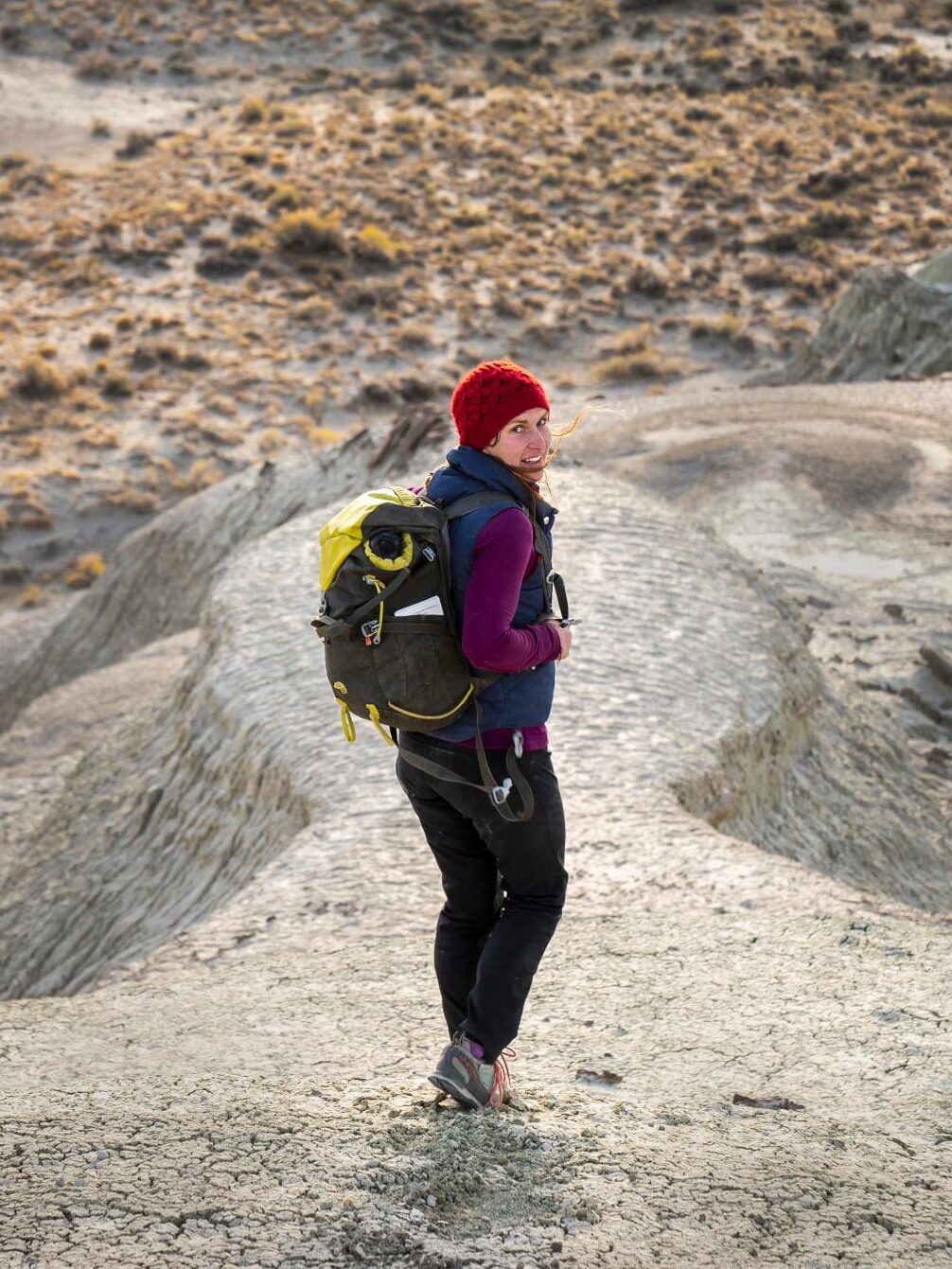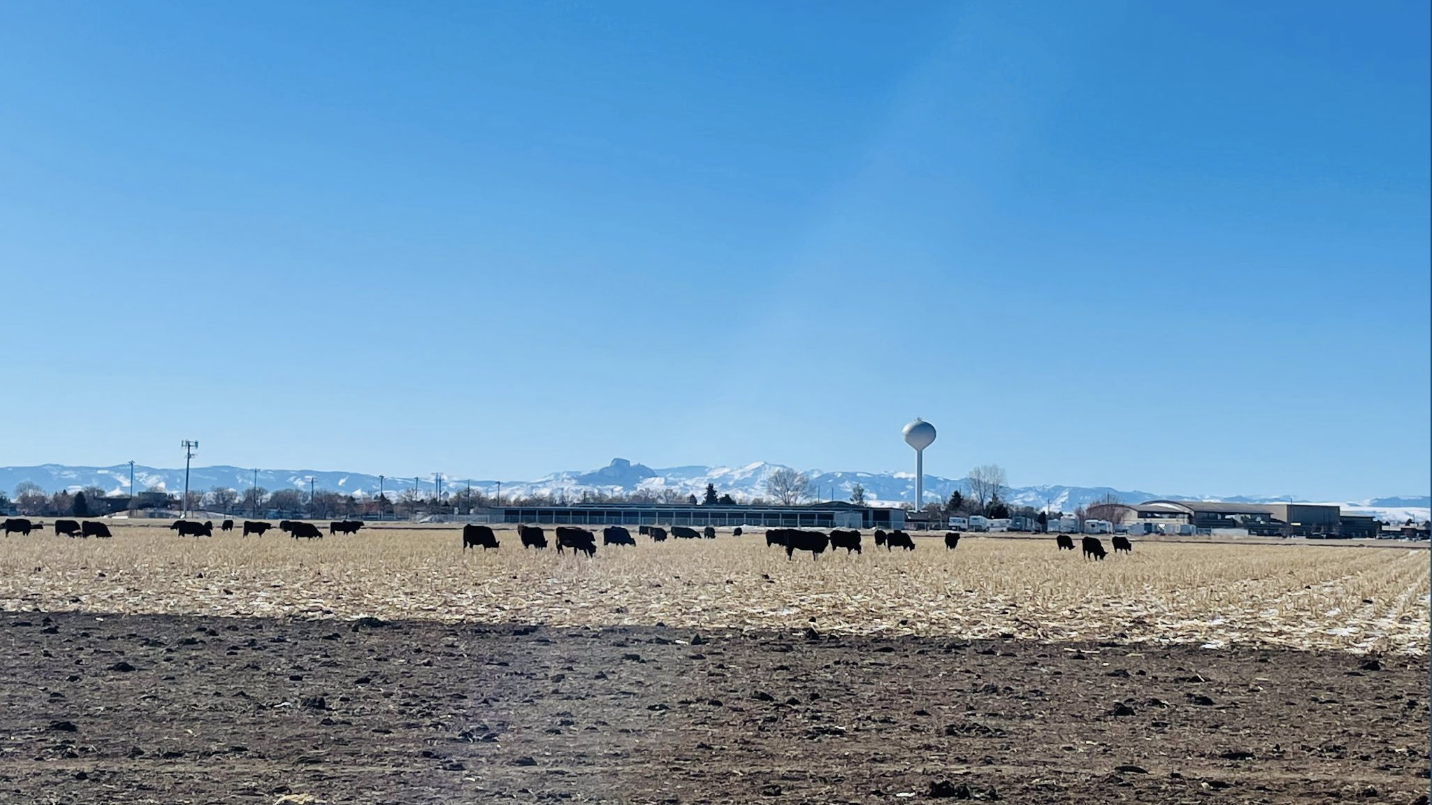Welcome to the Western Collaborative Conservation Network’s profile series “Collaboratives Behind-the-Scenes.” This series features Q&As with different conservation organizations to provide a view into what it takes to run a collaborative organization from challenges faced in building partnerships to tips for budding organizations. Whether you’re already running a collaborative and are looking to increase your efficiency or are thinking of starting a collaborative but want to know more about what you’re getting into, we hope you find this series insightful.

Western Landowners Alliance (WLA) is a membership-based organization working towards “a future in which private and leased public lands in the West are resilient to stressors, healthy and biologically diverse, and provide for prosperous rural business and critical ecological services.” WLA does this through advancing policies and practices that sustain working lands, connected landscapes, and native species. The work of Western Landowners Alliance (WLA) spans across the Western US with folks in Wyoming, Oregon, California, Idaho, New Mexico, Colorado, and Montana.
We had the pleasure of speaking with Shaleas Harrison, (pictured right), Western Landowners Alliance Wyoming Resource Coordinator. Shaleas Harrison grew up on a small farm in the Bighorn Basin of north-central Wyoming. In addition to maintaining her agricultural roots growing a variety of beans and barley, Shaleas recently started a job with WLA.
Note: This conversation has been edited for clarity and length.
How did Western Landowners Alliance get started?

We are landowner founded and our membership is landowner and land manager based. Leslie Allison is one of the founders and the Executive Director. I believe some of our original board members are still on the board today. We are somewhat new (founded in 2012), and our footprint is west-wide.
How is your organization structured and how did that structure come to be?
WLA is a membership-based organization. We have 17 staff and we’re growing rapidly. We have a board of directors and most of our funding comes from donations, grants, foundations, and our membership.
Our lands are like family. We want to know they will thrive. Private ranches, farms and forest properties are an important economic and cultural mainstay for Western rural communities. These working lands provide jobs and a high quality way of life. They also provide valuable open space, protect crucial habitat and wildlife corridors, harbor the majority of imperiled species and control much of the water, including headwaters critical for healthy watersheds and downstream users. Most landowners have a strong interest in managing their land to support these diverse values, yet we face many challenges in doing so. It takes more than just desire and vision to keep land healthy, productive and intact; it takes knowledge and science, money, skilled labor, community resources and supportive public policies.
Faced with these challenges, in late July 2011, a diverse group of landowners and managers, conservation biologists and private investment advisors–representing 8 million acres of deeded and leased land across nine Western states and Alberta–convened to explore what we could do. Interviewees, which included both individual landowners and collaborative leaders, agreed that the major drivers and challenges shaping the West must be addressed at the scale of the challenge: West-wide.
The Western Landowners Alliance was born.
What does it mean to be a member of Western Landowners Alliance?
We work on water issues, policy, and stewardship. Our main goal is to keep working lands in-tact and whole. We provide a service to our members, which is connecting landowners to resources. There are different sectors of our work: we work in policy at both the federal level and local level– any kind of policy that impacts working lands, such as the Farm Bill, which is a huge program. There’s also our “Working Wildlands” program which supports landowners in mitigating carnivore conflicts on their operations. And of course there are wolves and grizzly bears throughout the West and we try to have a proactive approach to solutions that is collaborative with the landowner. We help to get those folks to the table and make sure that the landowner and land manager voices are heard when conflicts arise. And there are other programs across the West. I’m in Wyoming and focused here so that’s where I’ve really been digging in. It’s been a lot of fun so far.
Shaleas, can you tell us a little about your role as the Wyoming Resource Coordinator?

As the Wyoming Resource Coordinator, I work with landowners to inform them about resource opportunities that support conservation, stewardship and economic viability on private lands. This involves providing some technical assistance about regional, state, and federal resources. It is also important that I support and facilitate the exchange of knowledge among landowners to elected officials and federal agencies. I also am working closely with USDA staff and landowners on the Wyoming-USDA Pilot Partnership. This partnership has many benefits for Wyoming operations within priority big game habitat. The mission of our organization is to sustain working lands. So, I am here to connect landowners to those resources and support them where they see fit.
What drew you to this position and WLA and what kind of work are you excited to pursue in this role?
Growing up in the Ag industry lends me to have an understanding of the struggles and rewards that landowners face when they make their living off the land. And, of course, my personal values really reside with that. There’s a huge sense of pride and heritage when you work on the land like that. So, it was appealing to me to be working for a group where all of that aligns. I heard about this opportunity and thought, “Gosh, I’m definitely going to apply.” I was in the middle of jobs and just got done working on the farm so it seemed like a natural fit.
What I’m most excited about is really helping people in my community that I know. Conservation and stewardship on private lands is really, really important right now in the 21st century. If you think about where all of the cities were settled and the land that’s farmed right now: they’re close to water, they provide great habitat, and it’s also where people want to live. So, if we want to sustain the populations of ungulates and species that we have now, we need to think about opportunities and ways to incentivize landowners to stay in business, to keep doing what they’re doing. And growing local food is important. Even that is threatened by markets, development, and we have to ensure those systems are still localized and a part of our local economies.
People are trying at every level. We have a free market and we have programs to support food in this country but it’s really hard to compete with global markets with labor shortages and the cost of labor. There’re just a lot of economic hurdles. And there are also unintended consequences of certain policies and programs that no one could ever anticipate so people are trying to figure all that out.
What past partnership experiences are you proud of and why?
I am working on forming those partnerships right now in my role in the state of Wyoming. I am supporting and coordinating the Wyoming-USDA Big Game Pilot Partnership. The USDA and Wyoming are increasing resources that target regions of Wyoming where there are wildlife migrations. They’re working closely with landowners, the Game & Fish, and NGOs, to make that happen. I am still trying to wrap my brain around it but it’s really exciting to see this momentum everywhere from all different entities– from conservation districts to local Natural Resource Conservation Service and Farm Service Agency offices, to the governor, to the Under Secretary of Agriculture, all working together to accomplish a goal, which is to sustain migrations and working lands.
I am working and building upon years of hard work from people who have made this partnership happen. The programs being offered through the USDA are offering fair compensation to landowners for the ecosystem service that they are providing to the public, which is maintaining wildlife habitat. If we value that, it’s important that they are compensated in a way that allows them to continue to do it, so the threats of development or selling the land are at least mitigated.
How do you evaluate or measure partnership success?
It’s fairly new but we are working on sharing the programs right now. Then there will be a sign up and we will be able to gauge how many people enroll in some of the programs, specifically Grasslands Conservation Reserve Program, which is essentially a habitat-lease. Habitat leases are something that WLA has stewarded for many years: increasing rental rates and some of the provisions of that lease to make it meaningful for landowners to actually sign up. At the end of this year, we will have a better idea of how many people sign up and what sort of glitches there are so we can tweak it and make it better. At this point, it’s still too new to tell.
What’s really neat is that other states are really looking at Wyoming as a leader in this realm and we may work with other states to replicate something similar. And Wyoming is just incredible; we have these long migrations, we have a long history of working well together through the sage grouse planning, and it’s a small state (i.e. there’s not a lot of people). It’s also a conservative state, so it’s a great place to start with something like this.
What are your goals for this program within the next year?
My goal for the Western Landowners Alliance, personally, is that I’d like to see landowners benefit from the Habitat Leasing. The leasing of land for a variety of purposes is familiar to the agricultural community. Farmers and ranchers lease pasture for grazing, hay production, conservation, energy development, hunting and other public access. Similarly, habitat leasing is a negotiated agreement between a landowner and a lessee in which the landowner receives compensation for providing products or services that benefit public wildlife for a specific amount of time. Lessees can include individuals, businesses, non-profit organizations, charitable funders, government agencies, or a combination of interested parties. Habitat leasing is occurring through the USDA’s Grassland Conservation Reserve Program (G-CRP). It is a working lands program, supporting the conservation values that producers and landowners provide. Producers may enter into a 10- or 15-year contract and receive an annual payment in exchange for providing wildlife habitat. Land may remain in production, with haying and grazing activities allowed to continue in line with a management plan. Annual payments range from $13-$21/acre, depending on the county in Wyoming. Currently, there are less than two hundred thousand acres enrolled in Grassland-CRP in Wyoming, seeing those numbers double or triple is a good goal.
I’d also like to continue to shape the narrative around the 21st-century model of conservation, which is not to protect land from people and activities but to work in partnership with people on the landscape. You know, the last century’s model of conservation was to put as much land into the public domain as possible and then debate and fight about what designation should be on that landscape (wilderness, recreation, etc.). It’s really hard to put more land in the public domain. Of course those conversations are still appropriate in certain communities, but we need to start looking at conserving and sustaining private lands and not see those be further fragmented or developed.

How do you plan to involve and engage stakeholders through these projects and maintain involvement?
I am trying to get connected with local groups and Ag entities in the state. Of course I have a fair amount of familiarity with those because I come from a farm and I live here. For example, this weekend I’m headed to the Green River Cattlemen’s Association banquet to present about these programs and the partnership. I just want to share the information with them. I’m not there to sell them something. I don’t work for the government. We’re not an environmental group; we represent landowners and seek to keep land working and sustaining diverse species. So it’s really our job to ensure that they’re hearing about these opportunities.
As far as other stakeholders, we just had a big meeting yesterday with USDA staff, partners, the Game and Fish, there were people from the US Forest Service and the Bureau of Land Management, and what is really great to see is that everyone wants the same thing. We all want the same thing. Here are some tools to get us there. And the tools aren’t perfect, we’re constantly tweaking them, but there’s a big galvanized group of people here that are going to try to work towards conservation on private lands.
I sure do have a lot to learn, my gosh. I’ve been studying this stuff diligently for a month or more now and I still don’t fully understand how it all works. So, I know that if a landowner wants to go to the FSA office or go to their USDA website, it is a bombardment of acronyms and technical language that is all very similar but nuanced. And people here, really anybody that makes their living off of the land, has a very strong opinion about what that should look like, and they do not want top-down regulations or someone coming in and telling them what to do.
So I have to walk a really fine line sharing these opportunities and not overselling it while also reminding the landowners that the USDA/WY Partnership in particular, was based on feedback from local input. So local Ag producers here vocalized what they needed: “We need a habitat lease, we need rental rates to go up. You care about wildlife? Well, I’m providing a service, pay me for it.” So we’ve taken that feedback and this is what we have. Again, it’s not perfect and there are some strings attached– there’s a contract, there’s a management plan that is developed with the landowner.
Is there anything more you’d like to add that you’d like people to know about WLA?
We’re just a vibrant group of folks and growing rapidly. I feel really lucky to be a part of this group. I have a ton of learning to do. I was just talking to the Chief Operating Officer this morning and asked if there’s a conference they can send me to because I am still unaware of what all these acronyms mean. I’m just kind of being thrown into it. It’s crazy, but I feel lucky.
And also, it’s great to have a job in which I can work remotely and still be able to work on the farm in the summertimes. Personally, I think that’s something that really fits with me. It’s nice to work with people that understand how important it is that we have local food and the struggles that people go through. You can romanticize it all you want. But when you’ve been waking up at five in the morning for three months to irrigate hundreds of acres, it really wears on you and it really wears on your body and there’re just a lot of challenges to keep operations going.
There are a lot of people working in this space. It’s interesting coming from the conservation world because I was someone who really fought for designations like wild space and felt like it was really important. And it is; I don’t mean to diminish the work people are doing in that area but it’s also really easy for us to get stuck in our echo chambers and islands and not think about how a policy or land designation might affect a landowner who is a conservationist and providing something important. If you put that landowner out of business and that area becomes houses, we all lose. It’s really hard to think about everybody’s perspective.
We also need a vibrant economy, which some people don’t realize. And we need strong private property rights because that makes a strong economy because the people that work that land know what to do to make it productive.

